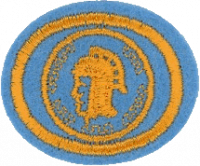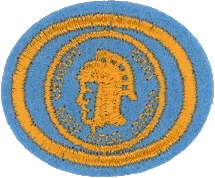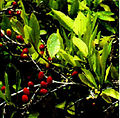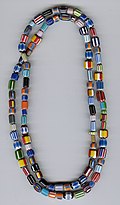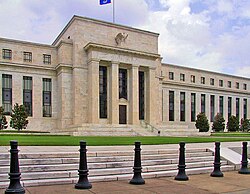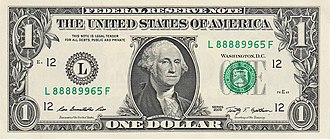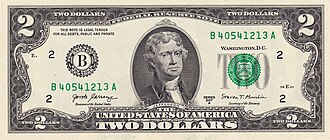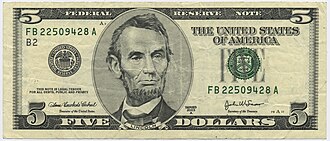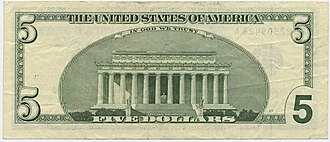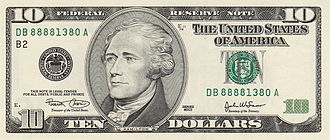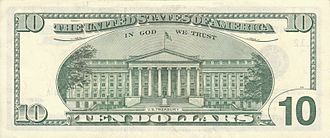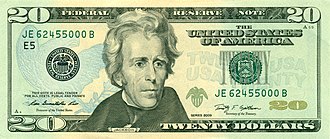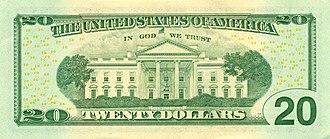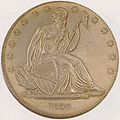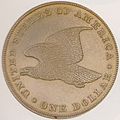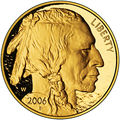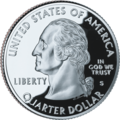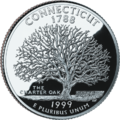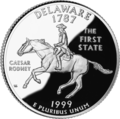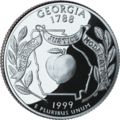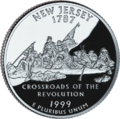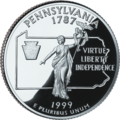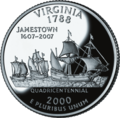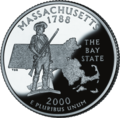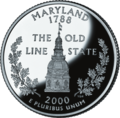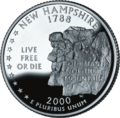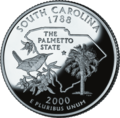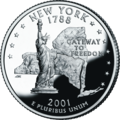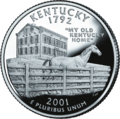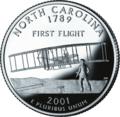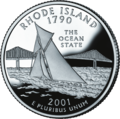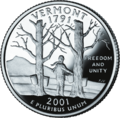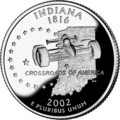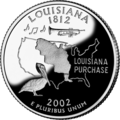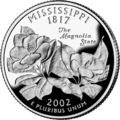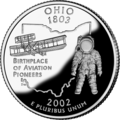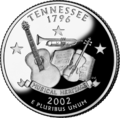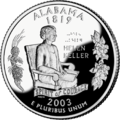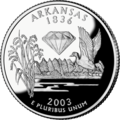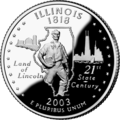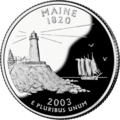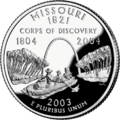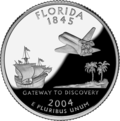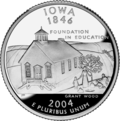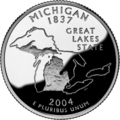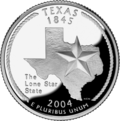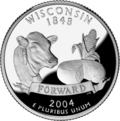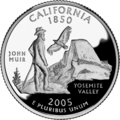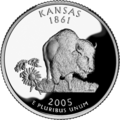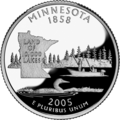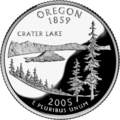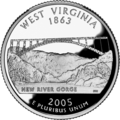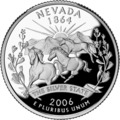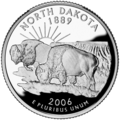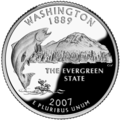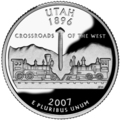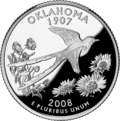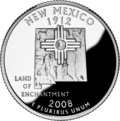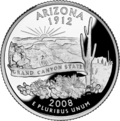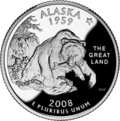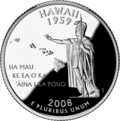AY Honor Currency Answer Key for Canada used by General Conference
1
Barter: as a dictionary puts it, barter is the exchange of something you own for something else that someone else owned. For example, if I raised chickens, and you grew apples, and I wanted some apples and you wanted a chicken, we would come to an agreement to exchange my chicken(s) for your apple(s).
After a while, I had enough of apples, and wanted something else. My other neighbor was vegetarian, and grew corn, but he did not want chickens. I found out that he also liked apples, so I bartered my chickens for your apples, and then traded the apples I got for my neighbor's corn. In a clumsy way, the apples were a medium of exchange, because they allowed me to trade for what I wanted. Unfortunately, you did not always want chickens, and apples were not always in season, so there were times in the year that I could not trade.
Simply put, a medium of exchange is a substitute used in trade to avoid the inconvenience of the barter system. This allowed the value of your apples, the corn, and my chickens to be valued differently. For example, I did not believe that I should only get one apple for one chicken. The chicken is bigger than an apple. Perhaps the first medium of exchange were stones. I would trade my chicken for four stones, and you would trade your apples for one stone, and the corn would be traded for two stones.
Very soon, we decided stones would not be a good medium of exchange, because:
- it was not very portable
- it could not be easily divided
- it was heavier than it was worth
- sometimes we could not recognize it
- and the neighbor's kid found a rockpile on the other side of the stream
Fast forward a few years, and currency has now been developed. Currency is a unit of exchange, which allows goods and services to be exchanged. It is one form of money (where money is anything that serves as a medium of exchange, a store of value, and a standard of value).
Unique forms of money
http://en.wikipedia.org/wiki/History_of_money
2
Royal Mint
Before 1908 the Royal Mimt produced coins for Canada, mainly from London, UK.
Royal Canadian Mint
The Royal Canadian Mint (often abbreviated RCM) is a Crown Corporation owned by the Government of Canada that produces all circulating coinage for Canadian trade and commerce. The RCM is also a world leading producer of precious metal coins and bars and collectable and commemorative coins. The RCM has long carried on a business of producing coins for many other countries. RCM is designed to operate for profit without any Government subsidy.
Ottawa Facility
The Royal Canadian Mint has two facilities. The older facility was built on Sussex Drive in Ottawa opening in 1908 as a branch of the UK’s Royal Mint. The building is now a National Historic Site and continues to mint all precious metal and commemorative coins for Canada.
In 1931, Canada became an independent dominion of the British Empire and the assets of the Ottawa branch of the Mint were transferred to the Canadian government. In December 1931, the Royal Canadian Mint was created as a branch of the Department of Finance via an act of Parliament.
In the 1960’s the Mint identified a need to expand, received money to expand, but could not secure an Ottawa location.
In April 1969, the Royal Canadian Mint was reorganized as a Crown corporation via the Royal Canadian Mint Act and gained a new board and increased autonomy.
Winnipeg Facility
In February 1970, Supply and Services Minister James Richardson proposed building the Mint's new facility in Winnipeg. This was controversial because the minister was himself from Winnipeg, and the facility would be more than 1,600 km (1,000 mi) from the Ottawa facility. A study showed that the proposal had merit because raw materials could be purchased from a supplier in Alberta, rather than a competitor outside of Canada. Eventually, it was agreed in December 1971 that the Mint would build a facility in Winnipeg. In 1972, the land was purchased and construction began, and by 1976 the facility was officially opened.
Today RCM’s much larger Winnipeg facility mints all Canadian circulation coins, as well as foreign coins for RCMs many international customers.
Mint Marks
Mint marks in Canada are different from those found in the United States because all circulation coins are made in Winnipeg. The RCM does use mint marks for various reasons including test coins, and for promotional reasons. Wikipedia has a good run down of these marks at Royal Canadian Mint
More Detailed History of the Royal Canadian Mint
A lot more detail on the RCM and its facilities can be found on Wikipedia’s Royal Canadian Mint article. The RCM itself is very history focused so Pathfinders should check out [Mint.ca]
Bureau of Engraving and Printing
The Bureau of Engraving and Printing (BEP) is an government agency in the United States Department of the Treasury that primarily prints Federal Reserve notes for the Federal Reserve, but also produces a variety of other government security documents.
The Federal Reserve notes are printed at the bureau's facilities in Washington, D.C. and Fort Worth, Texas. The BEP produces other government products such as postage stamps for the United States Postal Service, hand engraved invitations on behalf of the White House, Treasury securities, identification cards, and naturalization certificates. The BEP does not produce any U.S. coins; that is the responsibility of the United States Mint. The Fort Worth facility was opened officially on April 26, 1991.
The BEP had its foundations in 1861 with workers signing, separating, and trimming sheets of Demand Notes in the Treasury building. In 1877, the Bureau became the sole producer of all United States bills and notes.
Coin Composition
In 1792, law was enacted which said that American money was to be made of gold, silver, and copper for the $10, $5, and $2.50 coins. The $1, half-dollar, quarter, dime, and half-dime were made of silver. The 1-cent and half-cent were made of copper.
During the Great Depression, the mint stopped producing gold coins (1933). In 1964 a silver crisis caused the replacement of silver in the quarter and dime, but the half-dollar's silver content was reduced from 90 per cent to 40 per cent silver from 1965 to 1970. Today, these coins are composed of cupro-nickel clad, with a pure copper core, and an outer layer of a 75 per cent copper, 25 per cent nickel alloy.
Nickels are also made from the 75-25 alloy, and the cent which was a copper coin, is now composed of copper plated zinc. The cents are less expensive to manufacture, and weighs 2.5 grams and is about 20 percent less than cent coins previously minted with 95 percent copper and 5 percent zinc, which weighed 3.11 grams. The composition of the cent was changed in 1982, and cents, and both copper and copper-plated zinc cents were produced in that year.
3
Coin and currency are put into circulation by your banks (depository institution). These banks obtain the coins and currency from the Federal Reserve Banks. The Federal Reserve, the Bureau of Engraving and Printing (BEP), and the U.S. Mint do not release coins and currency direct to the public.
4
4a
An alloy is a combination of two or more elements, at least one of which is a metal, and where the resulting material has metallic properties. The resulting metallic substance usually has different properties (sometimes significantly different) from those of its components. Nearly all coins are made of alloys. As an example the US Nickel is made from Cupronickel an alloy containing 75% copper and 25% nickel which retains a silvery color even with so much copper content.
4b
A coin that has had its date altered in an attempt to deceive someone into thinking it is more valuable than it really is.
4c
A buffed coin is one that's been polished to make it look like an uncirculated or proof coin. Buffing a coin wears down its original surface and adds tiny scratches, reducing its value to collectors.
4d
Coins which are made by pouring a molten alloy into a mold.
4e
Coins made of layers, like a metal sandwich. US dimes and quarters since the elimination of silver content in 1965 are good examples of clad coins.
4f
Commemorative coins are legally issued coins with a design intended to commemorate or draw attention to some event or person. They are so called to distinguish them from regular issue coinage.
4g
An engraved tool used for stamping a design onto a coin.
4h
The field is the background—the part of the coin that shows no picture or words.
4i
An inscription is any letter, word, or phrase pressed into the surface of a coin.
4j
A coin having letters written on its edge.
4k
The mint mark is a small letter that tells which mint branch struck the coin.
4l
The front side of currency or a coin (often called "heads" on a coin).
4m
A blank disc of metal from which a coin is made.
4n
Proof coins use a special process that gives them a shiny, mirror-like background and a "frosted" relief. Proof sets are made every year for all of our circulating coins. Like uncirculated coins, proof coins are not meant to be spent.
4o
The reeded edges still found on many coins (always those that were once made of gold or silver, even if not so now) were originally designed to show that none of the valuable metal had been shaved off the coin. These show up as ridges along the edge of the coin.
4p
The back side of currency or a coin (often called "tails" on a coin).
4q
A particular design or motif used over a period of time. This can used for a single denomination, or in some cases, used for several denominations. The Liberty Seated series encompasses five denominations, the Barber series three, etc.
4r
A representative coin, usually a common date, from a particular issue of a specific design, size, or metallic content of U.S.coinage. For example: the "Mercury Head" dime is a "type" coin, as is the "Lincoln" penny.
4s
A whizzed coin has been wire brushed or burnished, often on a wheel, for the same reason. Whizzing a coin wears down its original surface, reducing its value.
4t
When a coin is made, the blank is placed inside a collar and the coin is struck with a die. Sometimes a very thin piece of metal from the blank will flow out between the collar and the die. This is called the wire edge.
5
| One Dollar Bill | |
|---|---|
| Two Dollar Bill | |
|---|---|
| Five Dollar Bill | |
|---|---|
| Ten Dollar Bill | |
|---|---|
| Twenty Dollar Bill | |
|---|---|
| Fifty Dollar Bill | |
|---|---|
6
Grading coins is an art that requires some skill. Anyone with some practice can get a fairly good idea as to the neighborhood of the grade of a coin. It's important to know the grade of a coin because, in general, the higher the grade of a coin, the higher its value.
United States coins are usually graded on a 70 point scale that was devised by Dr. William Shelby. 0 means that you can probably tell that it was once a coin, while 70 means that it is perfect. Some people, such as unscrupulous coin sellers, may overgrade coins so that they can sell them for more money than they are actually worth.
If you don't know how to grade coins, you should not buy coins without help. If you do not know how to grade coins for yourself, you will eventually learn, but the process could be expensive. Selling coins does not present as much of a problem. Just take the coins you want to sell to several different dealers to get their opinions as to the grade. Always ask for the grade opinion before asking for a price, as it can help in negotiating a fair price.
If you are interested in learning to grade coins yourself, you may want to start with the book titled "Official A.N.A. Grading Standards for United States Coins" published by the ANA.
Grade and Description
Cull (Mutilated coin) These coins are not just worn out, but may be bent, broken, stuck together, or incomplete.
PO-1 (Poor) Identifiable date and type
FR-2 (Fair) Mostly worn, though some detail is visible
AG-3 (About Good) Worn rims but most lettering is readable though worn
G-4 (Good) Slightly worn rims, flat detail, peripheral lettering nearly full
G-6 (Good) Rims complete with flat detail, peripheral lettering full
VG-8 (Very Good) Design worn with slight detail
VG-10 (Very Good) Design worn with slight detail, slightly clearer
F-12 (Fine) Some deeply recessed areas with detail, all lettering sharp
F-15 (Fine) Slightly more detail in the recessed areas, all lettering sharp
VF-20 (Very Fine) Some definition of detail, all lettering full and sharp
VF-25 (Very Fine) Slightly more definition in the detail and lettering
VF-30 (Very Finde) Almost complete detail with flat areas
VF-35 (Very Fine) Detail is complete but worn with high points flat
EF-40 (Extremely Fine) Detail is complete with most high points slightly flat
EF-45 (Extremely Fine) Detail is complete with some high points flat
AU-50 (About Uncirculated) Full detail with friction over most of the surface, slight flatness on high points
AU-53 (About Uncirculated) Full detail with friction over 1/2 or more of surface, very slight flatness on high points
AU-55 (About Uncirculated) Full detail with friction on less than 1/2 surface, mainly on high points
AU-58 (About Uncirculated) Full detail with only slight friction on the high points
MS/PR-60 (Mint State/Proof) No wear. May have many heavy marks/hairlines, strike may not be full
MS/PR-61 (Mint State/Proof) No wear. Multiple heavy marks/hairlines, strike may not be full
MS/PR-62 (Mint State/Proof) No wear. Slightly less marks/hairlines, strike may not be full
MS/PR-63 (Mint State/Proof) Moderate number/size marks/hairlines, strike may not be full
MS/PR-64 (Mint State/Proof) Few marks/hairlines or a couple of severe ones, strike should be average or above
MS/PR-65 (Mint State/Proof) Minor marks/hairlines though none in focal areas, above average strike
MS/PR-66 (Mint State/Proof) Few minor marks/hairlines not in focal areas, good strike
MS/PR-67 (Mint State/Proof) Virtually as struck with minor imperfections, very well struck
MS/PR-68 (Mint State/Proof) Virtually as struck with slight imperfections, slightest weakness of strike allowed
MS/PR-69 (Mint State/Proof) Virtually as struck with minuscule imperfections, near full strike necessary
MS/PR-70 (Mint State/Proof) As struck, with full strike
7
- Remember: A type set is a coin design that does not change from year to year (except for the date and mint marks).
7a
7b
I could not find a closeup picture of the CC mint mark, so, here is an external link: Historic Carson City coins
7c
The Gobrecht Dollar was an American dollar coin that was minted in small quantities from 1836 to 1839. It is named for its designer, U.S. Mint engraver Christian Gobrecht.
The obverse design of the Gobrecht dollar is virtually identical to that of the Seated Liberty coinage that was introduced starting in 1837. As on the other Seated Liberty coins, the main motif was a figure of the goddess Liberty clad in a flowing dress and seated upon a rock. The left hand bore a pole topped with a liberty cap, a symbol of freedom. The right hand held a shield inscribed with the word "LIBERTY". Early versions of the Gobrecht dollar contained a small banner reading "C. GOBRECHT F." below the figure. This credit, however, was considered to be too prominent, and does not appear in later revisions or in the other forms of Seated Liberty coinage. The coin's date is centered along the bottom edge.
James Earle Fraser designed both the Gold Buffalo and the Indian Head nickel, both of which contains an 'F' for his 'initials'. (Click the picture above and look under the date).
8
8a
8b
8c
A type set is generally defined as a collection that contains one, and only one, of each design for a series or complete coinage series. This "type set" collection will need to show all the designs of U.S. coinage minted from 1901 to 2000, and will be very difficult and costly to assemble.
Here is a mostly complete list of the "type" coins required, collect one of each type:
Small Cents
- Lincoln 1909 V.D.B.
- Lincoln 1909-1958
- Lincoln 1943 steel
- Lincoln Memorial 1959-
5 Cent Nickels
- Liberty Head WC 1883-1912
- Buffalo Type 1 1913
- Buffalo Type 2 1913-1938
- Jefferson Wartime 1942-1945
- Jefferson 1938-
Dimes
- Barber 1892-1916
- Mercury 1916-1945
- Roosevelt 1946-1964 Silver
- Roosevelt 1965- Clad
Quarters
- Barber 1892-1916
- Standing liberty type 1 1916-1917
- Standing liberty type 2 1917-1930
- Washington 1932-1964
- Washington Clad 1965-98
- Bicentennial 1976 clad
- Bicentennial 1976 40% silver
- State quarters 1999 – clad
- State quarters 1999 – 90% silver
Half Dollars
- Barber 1892-1915
- Liberty Walking 1916-1947
- Franklin 1948-1963
- Kennedy 1964 Silver
- Kennedy 1965-70 40% silver
- Kennedy 1971-Clad
- Kennedy Bicentennial 1976 clad
- Kennedy Bicentennial 1976 40% silver
Dollars
- Morgan 1878-1921
- Peace High Relief 1921
- Peace 1922-1935
- Eisenhower 1971-1978 clad
- Eisenhower 1971-1978 40% silver
- Eisenhower Bicentennial 1976 clad
- Eisenhower Bicentennial 1976 40% silver
- Susan B. Anthony 1979-1999
- Sacagawea 2000 -
- Presidential dollars 2007 –
Quarter Eagles, $2.50 Gold Pieces
- Liberty Coronet 1840-1907
- Indian Head 1908-1929
Half Eagles, $5.00 Gold Pieces
- Liberty Coronet with Motto 1866-1908
- Indian Head 1908-1929
Eagles, $10.00 Gold Pieces
- Liberty Coronet 1866-1907
- Indian Head No Motto 1907-1908
- Indian Head 1908-1933
Double Eagles, $20.00 Gold Pieces
- Liberty Coronet 1877-1907
- Saint Gaudens Roman Numerals High relief 1907
- Saint Gaudens No Motto 1907-1908
- Saint Gaudens with motto 1907-1932
Bullion Coins
- One ounce silver $1.00 1986-
- Tenth ounce gold $5.00 1986-
- Quarter ounce gold $10.00 1986-
- Half ounce gold $25.00 1986-
- One ounce gold $50.00 1986-
- Tenth ounce-one ounce platinum $10.00-$100.00 1997-
8d
Here's a suggestion for a series, "Washington" quarters:
- 2006 NE Proof.png
- 2006 CO Proof.png
- 2006 SD Proof.png
- Montana quarter, reverse side, 2007.png
- 2007 ID Proof Rev.png
- 2007 WY Proof Rev.png
Notes:
- Washington Quarters were made of 90% silver up to and including 1964. You are competing with 'silver collectors' who collect these coins for their 'raw metal' value, which can be up to ten times the face value of the coin - $2.50 for a 25-cent quarter. See http://coinflation.com
- Roosevelt dimes were made of 90% silver up to and including 1964.
- The 1964 Kennedy half-dollar is also 90% silver. The Franklin half-dollar(s) before that were also 90% silver.
- There is no Washington Quarter with a 1975 date. For 1975 and 1976, the US Mint stamped out the Bicentennial Quarter design which showed a date '1776 - 1976'. Unless you have a proof set that shows that it was released specifically in 1975 and 1976, you cannot tell the difference in the circulated coins.
- Nickels minted from 1942-1945 during World War II contain 1.75 g (0.05626 oz) silver. The silver content of these "war nickels" as of October, 2007 is worth $0.77.
- As of October 2007, the value of the metal in the nickel coin has reached 6.8 cents, a 36% premium over its face value, due to the rising costs of copper and nickel against a falling U.S. Dollar. In an attempt to avoid losing large quantities of circulating nickels to melting, the United States Mint introduced new interim rules on December 14, 2006 criminalizing the melting and export of pennies and nickels. Violators of these rules can be punished with a fine of up to $10,000, five years imprisonment, or both.
- The Coinage Act of 1965, Pub.L. 89-81, 79 Stat. 254, enacted 1965-07-23, eliminated silver from the circulating dimes and quarter dollars of the United States, and diminished the silver content of the half dollar from 90% to 40%. This act was in response to coin shortages caused by the rising price of silver.
References
Note: Facts About United States Money (free), Office of the Secretary of the Treasury, U.S. Treasury Department, Washington, D.C. 20025. Facts about your country's currency may be obtained from the government treasury department.
- US Mint - H.I.P.
- US Mint
- US Bureau of Engraving and Printing
- Federal Reserve System
- American Numismatic Association
References
